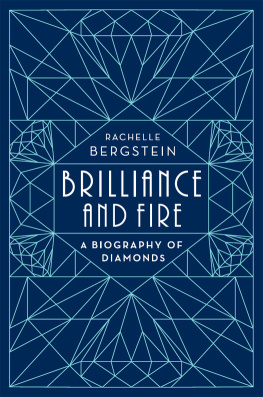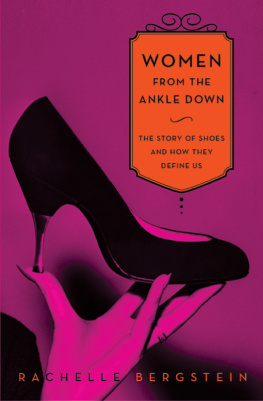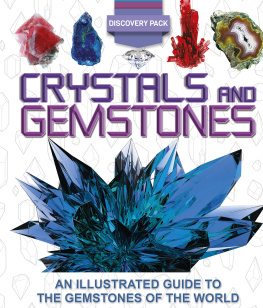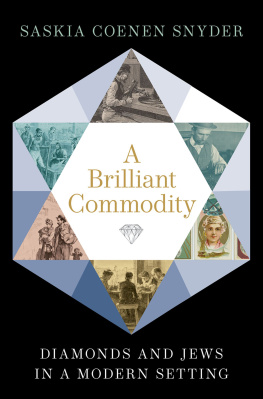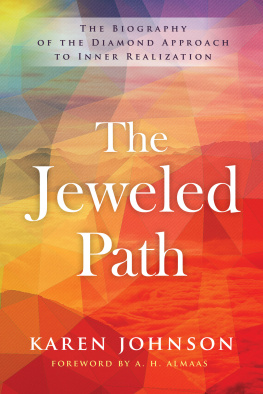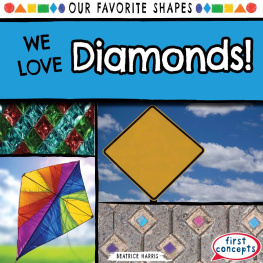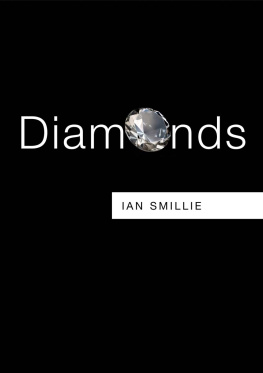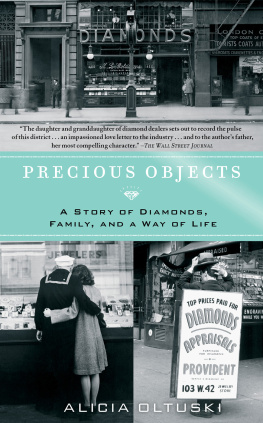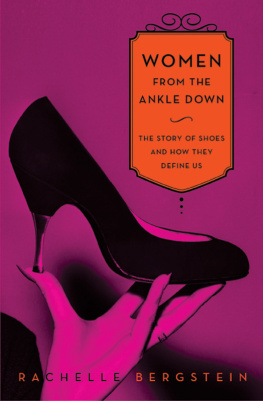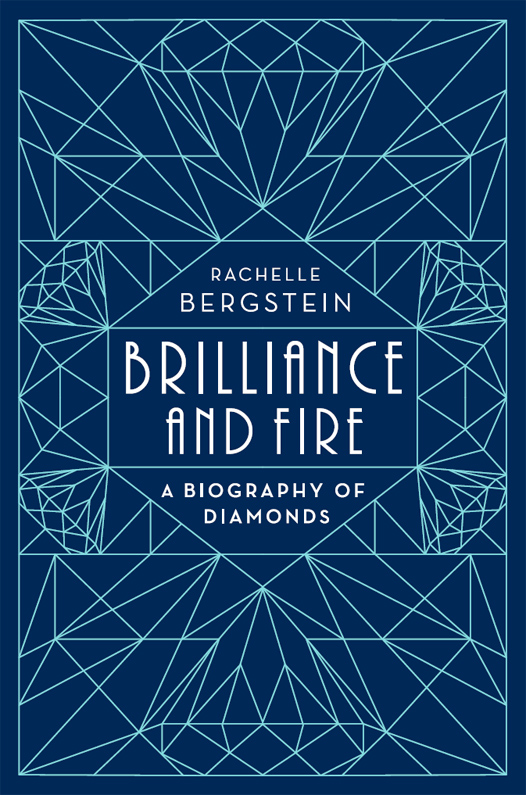H er mornings were always the same. For hours she might sit at the kitchen table with a cup of tea, wearing casual slacks and a blouse, scanning the obituaries or the gossip columns as the sun lifted toward noon and light flooded through the windows, reflecting on the 4.82-carat marquise-cut diamond ring on her finger. She was a housewife in her seventies with five grown children, and she was, understandably, bored. Occasionally she had visitors; some nights she went out to dinner with her husband, to one of the handful of local restaurants where they were regulars. He always wanted to go somewhere familiar, where the staff greeted him by name, and she rarely arguedif she wished theyd try a new place, she didnt say, and deep down she appreciated the extra fuss the waiters made over her.
But whether or not she had anywhere to go, she wore her diamonds every day.
They were first-generation children of poor European immigrants: shed grown up on a farm in northern New Jersey just a few miles away while her husband learned construction from his father. By the look of things, they lived out their American dream. They got married on the eve of World War II, and when he returned home safely from a tour with the navy, she loaned him the money to buy his first truck, which hefiercely determined to succeed and motivated, if not exactly championed, by her appetite for the finer thingsturned into a fleet. He made a small fortune in roofing, enough to support a family of seven and to buy a hulking colonial house on a hill. As the age of American consumerism unfolded, they filled it with expensive things: matching Cadillacs in the garage, custom suits and dresses, fur coats and the kind of dazzling jewelry she saw beautiful Hollywood actresses wearing in magazines. She loved Zsa Zsa Gabor, Elizabeth Taylorthe famous women who always looked glamorous and who, just by being themselves, promoted a very specific kind of midcentury materialism.
Still, they were unhappy. He drank too much; they both screamed. Like so many suburban couples in the 1950s and 1960s, they were deeply committed to the dual occupations of breeding and acquiring, and the resentment began creeping in when they both realized, independently, that neither vocation was entirely satisfying. They took out their frustrations on their kids, and on each other. But no matter how bad things got, every yearfor her birthday, or Christmas, or their anniversaryhe bought her diamonds. And every year, as she opened the little box and onlookers fawned, she gasped with pleasure but then remembered herself, and glibly pronounced the stones too small. Perhaps it was her way of telling him that even a lavish giftwhether it was a stunning tennis bracelet or a new icy-white pair of matched studswasnt enough to make up for the way he behaved the rest of the time. Or perhaps it went deeper than that. By admitting that she loved the presents, and thus allowing herself to let go of her long history of middle-class striving, shed be relinquishing the very thing that set her alightthe desire to be richer, fancier, better.
He retaliated in his own way; he kept buying her bigger diamonds, but of lesser and lesser quality. If she noticed the scheme, she didnt say. And he probably never saw the way that she admired her baubles when she thought no one was looking. Sitting at her kitchen table, her jewels shimmering in the natural light, my grandmotherthe Elizabeth Taylor of northern New Jersey, the woman Ive known to love diamonds more than anyone else in my lifeoften looked down at her hands and smiled.

What is it that makes the glittering rocks so captivating? When I set out to write this book, I wanted to trace the role of the diamond in our culture, paying special attention to the fundamental complexities of the stone as a symbol, simultaneously, of magnificent success and romancebut also of shameful avarice. Although I admit I find diamonds quite beautiful, and at times even mesmerizing, I dont yearn for them the way my grandmother didmy tastes are a bit simpler, and I dont possess that particular strain of restlessness Ive come to associate with the most enthusiastic and prodigal gemstone buyers. Even so, it probably isnt a fair comparison. During my grandmothers time, diamonds spelled royalty and riches and undeniable accomplishmentthere were many people behind the scenes of the industry working around the clock to make sure of that. Today the stones mean all of those things, but theyre also scarred by other, nastier associations that have surfaced in recent years: geologic devastation, slave labor, disrupted indigenous populations, unthinkable violence. Its no wonder that even though diamonds are still in fashion, its not terribly fashionable to like diamonds.
Those realities inform Brilliance and Fire. The stones are literally, and also figuratively, surprisingly multifaceted: theyve meant many different things to different people through the years. Once upon a time, they were believed to stave off ghosts, to avert death (if the diamond was clear), to invite death (if it wasnt), to promote fertility, to rupture the innards if ingested, and to prompt reconciliation between couplesjust to name a few of the otherworldly powers that have been ascribed to them. To the marginalized European Jews in the Middle Ages, they meant the possibility of employment; to their descendants during the Holocaust, they provided financialand portablemeans for escape. To the Indian maharajas in the seventeenth century who treasured diamonds, they were a source of mystical strength. To the wealthiest residents of New York City during the Gilded Age, they offered proof of relevance on the global stage, as well as a means for upper-crust social acceptance.
Knowing this, we may be amazed to think that the rocks come out of the ground lookingat least by comparison with the finished productfairly unspectacular. A typical rough diamond is irregularly shaped and has a milky, soapy white or even yellowish hue; the very first person to suggest cutting and polishing one to sparkly perfection deserves a long entry in the annals of lost history, perhaps alongside the culinary pioneer who decided to try eating a lobster. And like those ancient crustaceans, diamonds are products of another age: they form deep in the earths mantle under specific conditions of very high pressure and temperature, and then shoot toward the surface by way of subterranean volcanic eruptions. Scientifically speaking, theyre quite special. Theyre carbonjust like coal, and graphite, and you and Ibut in the case of the precious rock, the element forms in the shape of a sturdy crystal lattice that accounts for its unique and most covetable properties. Namely, diamonds are hardthey hold the title of hardest naturally occurring substance known to manand theyre also chemically stable, very good thermal conductors, and, to use the proper scientific term, optically dispersive. It is this final attribute that leads admirers like me to pause at the Tiffany & Co. windows: diamonds catch the light. When a diamond cutter approaches a rough stone, he has many goals in mind, but the primary one is usually maximizing the particular specimens reflectivity, which largely contributes to its most abstract yet desirable quality: the diamonds undeniable, almost visceral beauty.
The jewelers job is to highlight that beauty and, ideally, to enhance it, whether a stone is a quarter carat, a little over an eighth of an inch (4.1 millimeters, mm); or a carat, just past a quarter of an inch (6.5 mm); or an enormous three carats, measuring around three-eighths of an inch (9.4 mm), which still sounds tiny in theory until its compared with the diameter of an average womans ring finger (slightly smaller than 16.5 mm, the measurement for a standard size-6 ring). Since diamonds were first discovered up until the present day, craftsmen have worked to innovate the process of gem fashioning, giving us timeless cuts like the round brilliant, emerald, and pear shapes, as well as intermittently trendy ones like the princess cut, usually square with sharp corners; the marquise, which is oval like a football; and the romantic heart shape. The worlds finest jewels are indisputable works of art, created by people who are as passionate and committed to their craft as master painters, architects, authors, poets, and filmmakers all are. Even if youre not inclined to fawn over baubles, its difficult to look at Jacob & Co.s 2015 Billionaire watch, for instance, composed of 260 carats of invisibly set, matched, emerald-cut, winking white diamonds, and not feel a certain awe, akin to the experience of reading a great work of fiction or staring up at a towering skyscraper. Its respect for the vastness of human accomplishment and even, perhaps, the stirrings of the sublime.

